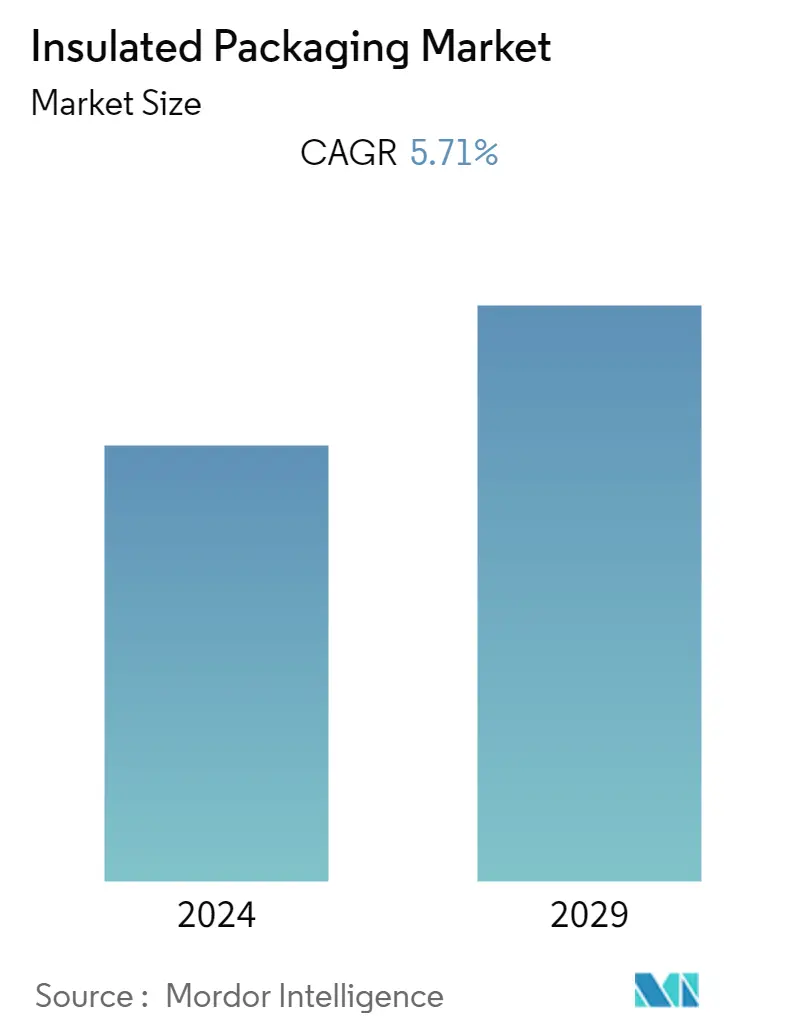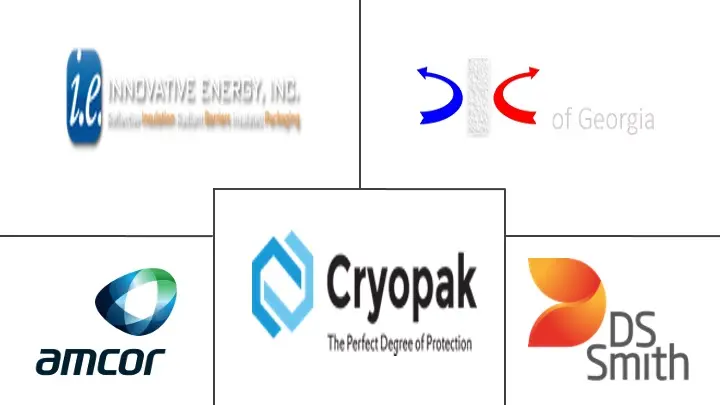Market Size of Insulated Packaging Industry

| Study Period | 2019 - 2029 |
| Base Year For Estimation | 2023 |
| CAGR | 5.71 % |
| Fastest Growing Market | Asia Pacific |
| Largest Market | North America |
| Market Concentration | Medium |
Major Players
*Disclaimer: Major Players sorted in no particular order |
Need a report that reflects how COVID-19 has impacted this market and its growth?
Insulated Packaging Market Analysis
The insulated packaging market was valued at USD 14.15 billion in 2020 and is expected to reach a value of USD 19.65 billion by 2027, and grow at a CAGR of 5.71% over the forecast period (2022 - 2027). Insulation packaging is vital for combating energy losses during transportation and storage. Some of the significant characteristics of insulated packaging are high resistance to heat transfer, low cost, low weight, low moisture susceptibility, ease of fabrication and transportation, durability, and mechanical strength.
- Moreover, insulated packaging plays a significant role in various other end-user industries, such as pharmaceutical and electronics. Pharmaceutical is one of the major end users of these insulated packaging as the product is sensitive to temperature. The packaging of temperature-controlled pharmaceutical products and medical devices is witnessing considerable growth in the overall healthcare industry.
- The increase in the number of e-commerce websites for food and beverages and medicines is proliferating the need for delivery of perishable goods without any wastage. This is further increasing the adoption of insulated packaging by online grocery stores around the world. According to INE Spain, consumers who bought food and perishable goods online increased from 12.8% in 2015 to 18.6% in 2018.
- The major advancements in protective packaging in the past few years have led to the usage of new materials such as cotton and wool insulation to offer a bio-based approach to reducing carbon emissions. For instance, SwiftPak's PLA bioplastic Packaging complies with local home or garden compost standards in the UK. The method has brought benefits such as keeping the internal product's temperature within 4 degrees Celsius for up to 30 hours.
- As of May 2020, Softbox launched a new cardboard insulated shipper to deliver chilled food. This cardboard has been manufactured to offer effective insulation layers that are similar to those of traditional expanded polystyrene with similar efficiencies. By using its proprietary Thermaflute insulating technology, cardboard insulation packaging uses a single-use low-cost parcel shipper featuring 100% recycled corrugated cardboard and no plastic. Such an initiative has led Softbox to remove 74.5 tonnes of plastic per year from their food delivery boxes and reduce 50% of plastic on the same.
- The outbreak of a pandemic has led to record numbers of consumers shopping online for groceries and restaurants moving to off-premises formats. Then, coming to insulated packaging for temperature-sensitive products, the pharmaceutical sector has been demanding. Considering the spike in e-commerce, the insulated packaging is expected to see strong sales with smaller e-commerce and food delivery formats across meal kits and other perishable food and beverage items. As multiple packages containing fresh and frozen items require good insulation, pandemic-led behavioral change has led to packages being left outdoors for some time.
